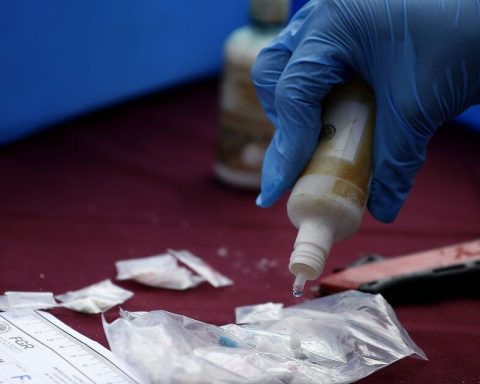HAVANA, Cuba. – Putting rice on the table has become a daily challenge for Cubans that few can overcome, especially in recent times. For quite some time now, the irregularity in its rationed sale has caused the inevitable increase in its prices in the informal or illegal market. Prices that are beyond reach for a considerable number of families. This circumstance is particularly unfortunate in the largest of the Antilles, where for many, if they do not eat rice, it is as if they had not eaten. And according to our eating habits, this cereal, along with beans, is the fundamental combination of our menu.
Rice was brought to our country by the Spanish colonizers and became the essential food for Creoles and slaves. Its sowing was adapted to Cuban soils, since it can be cultivated up to three times of the year. But it was not until the end of the 19th century that it began to be marketed, at first in small quantities; until its production covered most of national consumption.
However, starting in the 1930s, with the development of the more profitable sugar industry, many farmers who previously dedicated their land to rice began to plant cane. This caused the consequent decline in rice production, which was limited to just 10% of national demand, since it was only harvested in small plots.
During the governments of Gerardo Machado and Fulgencio Batista, grain tariffs were reduced. However, this was not enough to boost its production, since cane, coffee and tobacco continued to be more profitable. Although rice was planted on some farms in the 1940s, this was primarily for self-consumption. Only some farmers in Matanzas and Las Villas marketed it in limited quantities that barely covered a small part of the national demand.
So this crop did not have the necessary economic support until the mandate of Dr. Carlos Prío Socarrás. Thus, in October 1951, the Agricultural and Industrial Development Bank (BANFAIC) was created. That was the support that was missing for rice-producing farmers, who could now request credit to increase their production.
With this dream come true, article 280 of the 1940 Constitution was fulfilled, which established the creation of a banking system for the development of the Cuban economy. In this regard, the Navy Diary published: “The Agricultural and Industrial Development Bank is the first major effort to give the Creole peasant the essential source of credit to become independent from onerous intermediaries that almost always absorb the wealth of our soil.”
In effect, the benefits of BANFAIC were reflected not only in the growth of the crop, but also in the incorporation of new provinces to its harvest during the 1950s. Until that time, a national demand of 6 million quintals was produced. in the country 2,500,000. Later, although rice was also imported, up to two-thirds of that demand was grown in the yard.
Cereal had reached such a boom on the Island that by 1959 an unprecedented harvest was produced. Unfortunately, the following year, without government support, its cultivation suffered a considerable decrease since sugarcane planting was prioritized and seeds from the United States were no longer imported.
Curiously, a few months after taking power, Fidel Castro announced the drainage of the Zapata swamp to plant rice, a task that began between April and May of that same year, 1959. The plan was to drain 5,000 caballerías with the aim of converting that wetland in the rice granary of Cuba, despite the extensive areas already dedicated to cereal in almost the entire national territory. For this purpose, Dutch, French and Soviet technicians were hired. Two months of work later, both were already aware of the disaster that this crazy project would mean, not only because the swamp was undesirable, but also because of the disastrous consequences for the Cuban ecosystem.
In 1965, after certain disagreements between the “commander” and China, cereal imports were affected, which forced the leader to rethink the policy of not planting rice in the country. Thus, in 1970, a plan was launched to “reanimate” its cultivation with the cooperation of Vietnamese specialists. However, despite the abundant propaganda that that project enjoyed and the copious praise given to that great investment, with the positive results of which national demand could be satisfied, the objective to date has not been achieved. Then, during the crisis known as “Special Period” and after the socialist countryside of Eastern Europe disappeared, the inputs necessary for the cultivation of the precious cereal also disappeared.
More recently, with the purpose of activating the rice growing areas, the Government has given some of those lands – at the time full of marabou – in usufruct to private farmers. Unfortunately, on this occasion no progress has been noted in that purpose either, since they also lack the necessary resources. On the other hand, the Ordering Task It has come to mean a considerable increase in the price of inputs, and with this in practice it makes it impossible for farmers and tenants to develop a crop that is no longer profitable for them.
In the face of the current economic crisis, the Cuban Government alleges numerous difficulties in purchasing rice, in addition to the lack of economic resources to grow it. In this context, a new rice project with the cooperation of Vietnam plans to plant 1,500 hectares of the cereal. This time the crusade will begin in Güines, in the province of Mayabeque. The Vietnamese will provide technical attention to ensure the harvest, in a cooperation plan that the Cuban Government extended until 2025, and in which other foreign investments will also be admitted.
In fact, for years that Asian country has strived to boost the rice harvest in Cuba. Vainly. The Vietnamese never tire of plowing in the sea.

















